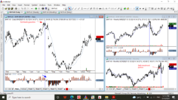- Joined
- 18 November 2021
- Posts
- 76
- Reactions
- 103
Hello everyone, hope you are doing well and enjoying your week. Lots of rain here.
I have had a good run with an investment Seagate Technology which manufactures hard drives i have held this for 18 months. I have a rule that i sell investments that are down 30% from the cost price. However does anyone kindly know when the best point to sell 100% of an investment that is doing well please? Would this be when financials or growth becomes less impressive please? I know for instance Warren Buffett has held Coca Cola stock for years but i suppose everyone's formula is different. If anyone had any thoughts on this i would be very grateful please, thank you for your kindness.
Thanks for all your support, it means alot. I believe this is the best forum around because of the very respectful and intelligent people in this community. Take care.
I have had a good run with an investment Seagate Technology which manufactures hard drives i have held this for 18 months. I have a rule that i sell investments that are down 30% from the cost price. However does anyone kindly know when the best point to sell 100% of an investment that is doing well please? Would this be when financials or growth becomes less impressive please? I know for instance Warren Buffett has held Coca Cola stock for years but i suppose everyone's formula is different. If anyone had any thoughts on this i would be very grateful please, thank you for your kindness.
Thanks for all your support, it means alot. I believe this is the best forum around because of the very respectful and intelligent people in this community. Take care.


